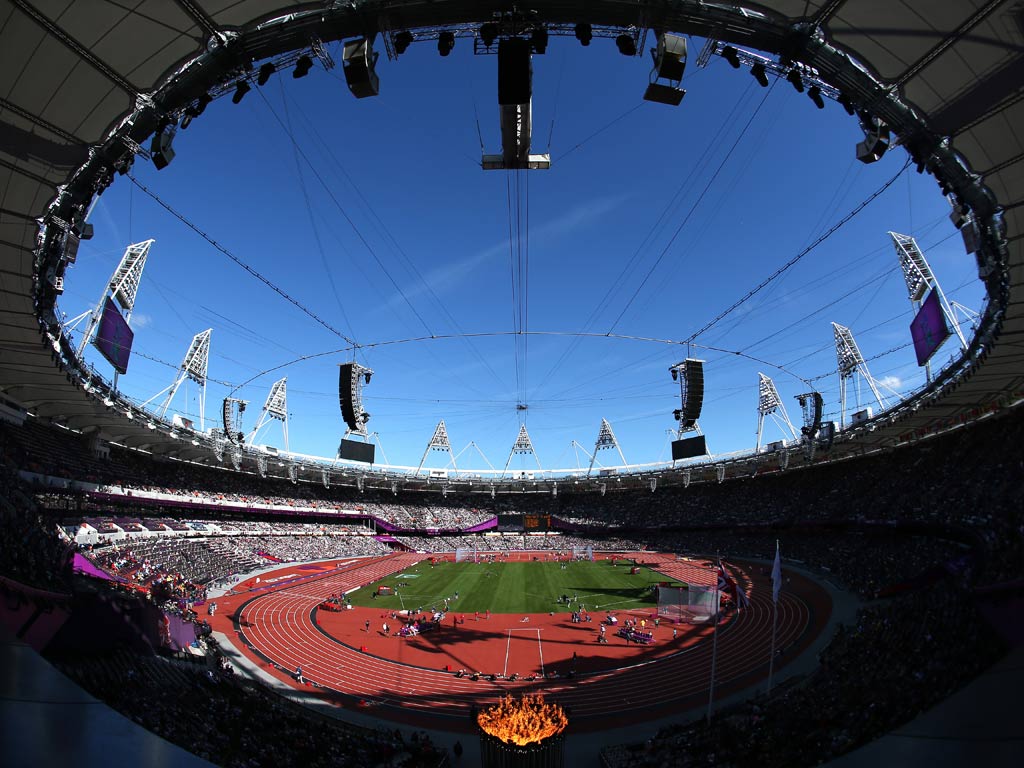Golden Games fails to drag youngsters from the couch
Although participation in the key 16-25 age range has seen no growth

Sport England have threatened to slash funding by a fifth to sports if they fail to meet participation targets. In two weeks the government agency will reveal its level of grass-roots funding for individual sports to cover the next four years, an award accompanied with the condition that if they do not attract more young people the amount could be cut by 20 per cent at the end of each year.
While the London Olympics has helped inspire an eye-catching rise in the overall numbers of people playing sport, particularly among women, there has been no growth in the key 16-25 age range; instead it has seen a decline in percentage terms over the period since London were awarded the Games.
The latest Active People survey conducted by Sport England – and the first since the Olympics and Paralympics – revealed an impressive 750,000 surge in the number of adults doing sport once a week. The most striking increase is in the number of women participating with over half a million more taking part in sport than this time last year. The numbers leapt in particular during and after the Games in London in July and August.
“They are very encouraging,” said Jennie Price, chief executive of Sport England, of the overall figures. “This is a big increase – 750,000 in a single year is a significant jump.”
The flat-lining of the figures among young people is an on-going concern, and one that Sport England, which hands out around £240m a year of grass-roots funding, has already put long-term plans in place to combat. It announced a five-year plan in January designed to help address the problem and will attach caveats to monies it hands out later this month, a funding announcement that coincides with UK Sport’s publication of its spending on elite sport for the next four years.
The 2005-6 Active People survey had 55.7 per cent of 16-25 year olds participating in sport; the latest figure is 54 per cent. There is no percentage change since last year despite the Olympics.
“It is really important we don’t assume young people are not interested in sport because more than half of them are,” said Price. “The challenge is to hang on to that 54 per cent and grow it. We haven’t got people going away from sport but we do need to work really hard to drive that figure up.
“For the first time every governing body will have a specific target to grow participation in 16-24 year olds. They will have to have a special programme aimed at that group. We have got a much tougher payments by results regime, a much tougher performance regime. [Sports] will have a really clear target for participation by the end of the year. If they don’t meet it 20 per cent of their funding is at risk.”
Nine sports, both rugby codes, hockey, badminton, basketball, gymnastics, football, netball and tennis, are already running schemes to target drop-off rates but none of them have managed to properly check the decline as yet.
The wider picture is much brighter, and the rise among women in particular is a notable fillip for Sport England and campaigners for women’s sport. “We have been worried about the gender gap for some time,” said Price. “It is still there – we mustn’t run away from that – but the fact that a lot of this growth is from women’s sport, and that it’s so big, half a million extra women playing sport once a week, is encouraging.”
Overall Olympic sports recorded the most notable rises, headed by cycling which has seen an extra 200,000 people climb into the saddle over the last year. Sailing, hockey and swimming have also risen. The influence of short-term factors is apparent in the fall in numbers playing cricket, a decline that is simply put down to the wet English summer of 2012.
“The Olympics is part of picture and it has helped but growing long term participation is about even more than that – it is about keeping it going,” said Price. “We have a great investment here over the next four years. One of the reasons we have that investment is because the country wants a legacy from the Olympics and it our responsibility and the sports’ responsibility to keep working at it and capture those people that have come to sport and hold on to them.”
In total 41 per cent of men and 31 per cent of women over 16 take part in 30 minutes exercise at least once a week. It is a total of 15.5m people. The number who exercise three times a week is 7.4m, an increase of 500,000 over the last four years. The previous government had set a target of getting one million more people to play sport three times a week by 2013. That was dropped by the coalition.
Subscribe to Independent Premium to bookmark this article
Want to bookmark your favourite articles and stories to read or reference later? Start your Independent Premium subscription today.

Join our commenting forum
Join thought-provoking conversations, follow other Independent readers and see their replies